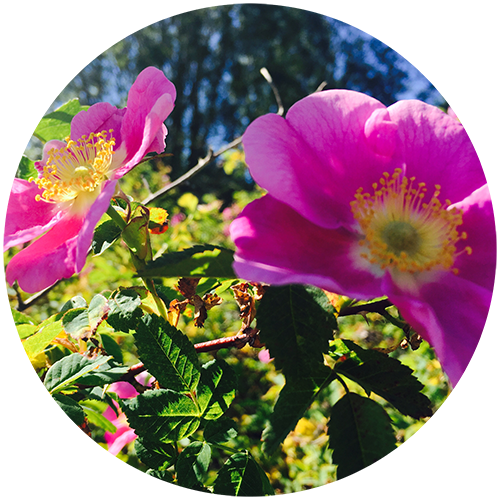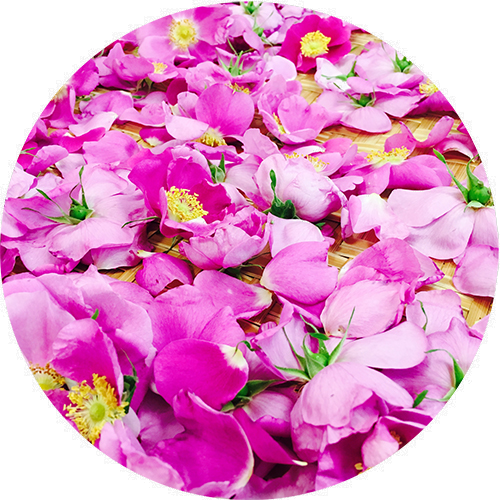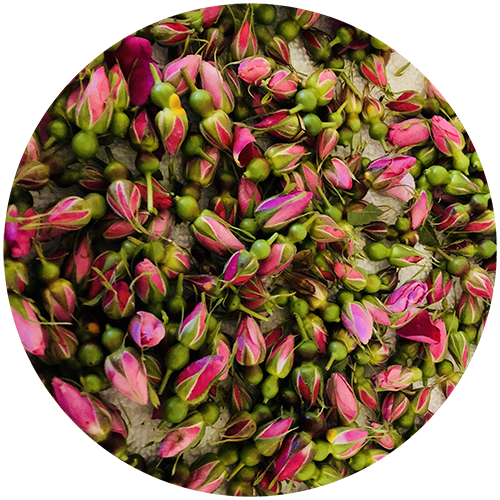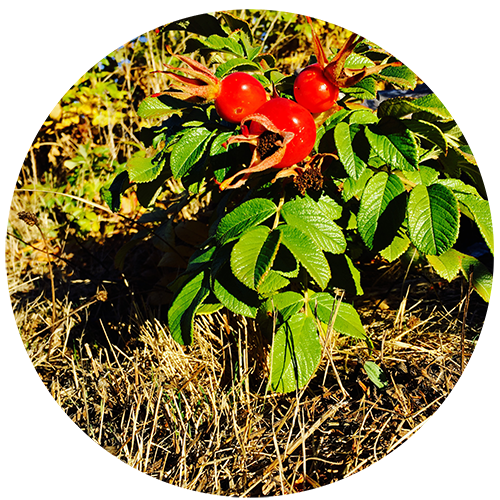The Community Power Issue: Solutions We Love
- 5 Ways to Eat a Rose
- Share

5 Ways to Eat a Rose
What better time than now, when we’re slowed down and trying to ward off contagions, to look to traditional medicines to fortify our immunity?
The resilient rose is legend, the royalty of flowers. For 35 million years it has captivated, invigorated, and immunized the living things that have evolved along with it. Not only are roses a global symbol of enduring love, they are also marvelous food and good medicine.
What better time than now, when we’re slowed down and trying to ward off contagions, to look to traditional medicines to fortify our immunity? For countless generations, Indigenous practices of organizing around traditional food and healing systems have supported community health.
Eating rose petals bestows flavonoids, antioxidants, and immunity-boosting vitamins and minerals. Antioxidants strengthen our hearts and blood vessels, and the astringent action in the body tightens inflamed tissue, soothing sore throats and coughs. Roses are rich in vitamins A, B, C, E, and K and minerals including calcium, iron, and phosphorous.
Wild rose is the perennial favorite to harvest, though any variety of rose can be used in cooking or medicine-making as long as it is not chemically sprayed. For Native Americans, roses are used in times of transition—birth and death—helping us transition through change with grace. They are beaded into regalia and adorn ancient artforms. Wild roses like the Dwarf (Rosa gymocarpa), Nootka (Rosa nutkana), Swamp (Rosa pisocarpa), or Rosa rugosa adorn different habitats ranging from open to wooded and dry to moist locations. Most places have a wild rose variety.
Harvest roses in the early summer when they are the most vibrant and fragrant. An early morning stroll just after the dew has dried is the best time to pick. Think good thoughts as you pinch the petals off the flower, leaving the inner part so that it can become pollinated and turn into a rose hip later in the season. Follow the vitality of the rose to find where the medicine is. After blooming, the plants shoot their energy back to the roots, then, when the first frost hits, push sugars to the fruits (rose hips), making them sweeter.

1. Fresh petals
Sprinkle them on salads. Put them into water along with lemon, strawberries, or raspberries for a healthy, uplifting beverage. Chop the petals up and stir them into softened butter for a fancy spread on biscuits, crackers, or muffins.

2. Infuse local honey
Place fresh petals in a basket and let them wilt for a day. Transfer wilted petals to a clean glass jar and pour lightly warmed honey on top of them. Making sure the flowers are completely covered, screw on a tight-fitting lid. Let the jar sit in a warm spot for one week. Every few days take the lid off and wipe any condensation from the underside with a clean paper towel. After at least one week or up to three, strain the honey and store your rose-infused sweetener in a glass jar in a cool dark place. Rose gives up its medicine easily, for the most part. Using a local honey also can assist in seasonal allergies. Drizzle on peanut butter toast or add a teaspoon to a warm cup of tea or some hot water with lemon.

3. Dry for tea
The easiest way to dry buds or petals or whole flowers is to simply lay them out in the sun on a dry day. Store dried roses in a sealed glass jar in a dark cupboard. Light will subdue their vibrant color over time. Dried rose petals can be steeped in hot water to make a tasty rose tea. For a more multidimensional flavor add some black tea, like Ceylon or Earl Grey, and a pinch of ground cardamom.

4. Flavor Vinegars
Add those dried flowers to a bottle of rice or white wine vinegar. The vinegar will draw out the minerals, fragrance, and floral flavor of the rose petals. It is a great way to boost the medicinal qualities of your salad dressings or brighten up a dish with complex flavors.

5. Rose hips in fall
Don’t forget about those rose fruits you spared during your early summer harvest. Revisiting those patches in the fall, preferably after the first frost when the fruit becomes sweeter, will gift you with a more potent flavor of rose, reminiscent of its close cousins apple and cherry. Just three tiny rose hips have the same amount of Vitamin C as an orange. Pluck the fruits off the rose bush and drop them into a dehydrator or a basket for a few weeks, moving them around once a day. After they have dried, remove the seeds. Grind the rose hips into a powder and add a splash of apple juice for an easy jam. They can also be steeped as a tea or infused in vinegar.
|
Valerie Segrest
(Muckleshoot) is a nutrition educator who specializes in local and traditional foods. She is co-founder and director of projects at Tahoma Peak Solutions LLC.
|

